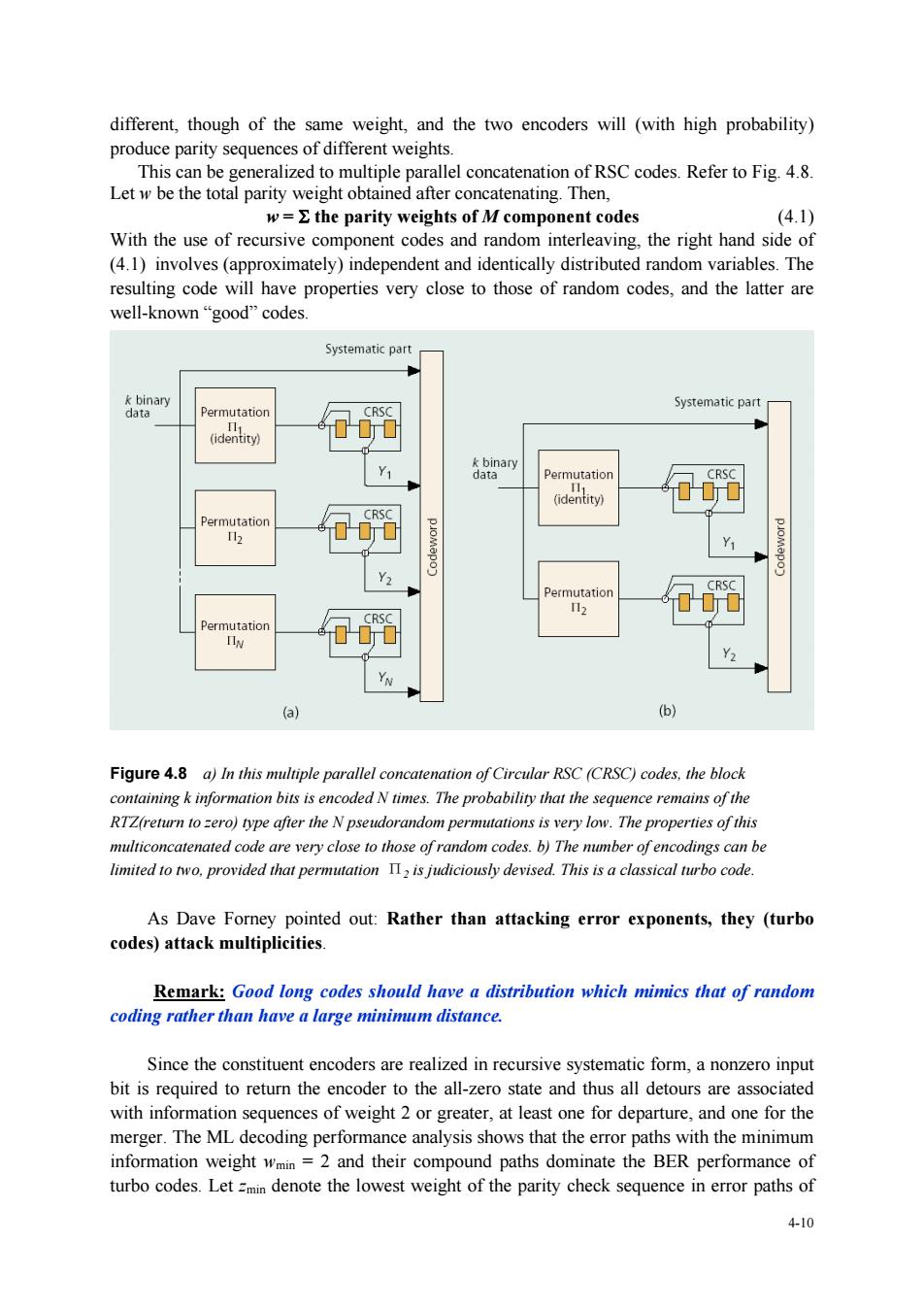正在加载图片...

different,though of the same weight,and the two encoders will (with high probability) e parity seque es of differer weights This allel concatenation of RSC codes.Refer to Fig.4.8. T the parity ith thusfiv comintereanthrist ad (4.1)involves (approximately)independent and identically distributed random variables.The resulting code will have properties very close to those of random codes,and the latter are well-known"good"codes. Systematic par y) (identity) Y2 YN (b) Figure 4.8 a)In this multiple parallel concatenation of Circular RSC (CRSC)codes,the block containing k information bits is encoded N times.The probability that the sequence remains of the RTZ(retrn tozero)type after the N pseudorandom permutations is very low.The properties ofthis very close to those of random codes.b)The mumber of encodings can be limitedto o provided that permutation devised.This isa classical turbo code. As Dave Forney pointed out:Rather than attacking error exponents,they (turbo codes)attack multiplicities. Remark:Good long codes should have a distribution which mimics that of random coding rather than have a large minimum distance Since the constituent encoders are realized in recursive systematic form,a nonzero input bit is required to return the encoder to the all-zero state and thus all detours are associated with information sequences of weight 2 or greater,at least one for departure,and one for the oding perfo eanalysis show that the e error paths with the minimum id thir compound paths dominate the BERperom of turbo codes.Let min denote the lowest weight of the parity check sequence in error paths of 4-104-10 different, though of the same weight, and the two encoders will (with high probability) produce parity sequences of different weights. This can be generalized to multiple parallel concatenation of RSC codes. Refer to Fig. 4.8. Let w be the total parity weight obtained after concatenating. Then, w = theparity weights of M component codes (4.1) With the use of recursive component codes and random interleaving, the right hand side of (4.1) involves (approximately) independent and identically distributed random variables. The resulting code will have properties very close to those of random codes, and the latter are well-known “good” codes. Figure 4.8 a) In this multiple parallel concatenation of Circular RSC (CRSC) codes, the block containing k information bits is encoded N times. The probability that the sequence remains of the RTZ(return to zero) type after the N pseudorandom permutations is very low. The properties of this multiconcatenated code are very close to those of random codes. b) The number of encodings can be limited to two, provided that permutation Π2 is judiciously devised. This is a classical turbo code. As Dave Forney pointed out: Rather than attacking error exponents, they (turbo codes) attack multiplicities. Remark: Good long codes should have a distribution which mimics that of random coding rather than have a large minimum distance. Since the constituent encoders are realized in recursive systematic form, a nonzero input bit is required to return the encoder to the all-zero state and thus all detours are associated with information sequences of weight 2 or greater, at least one for departure, and one for the merger. The ML decoding performance analysis shows that the error paths with the minimum information weight wmin = 2 and their compound paths dominate the BER performance of turbo codes. Let zmin denote the lowest weight of the parity check sequence in error paths of